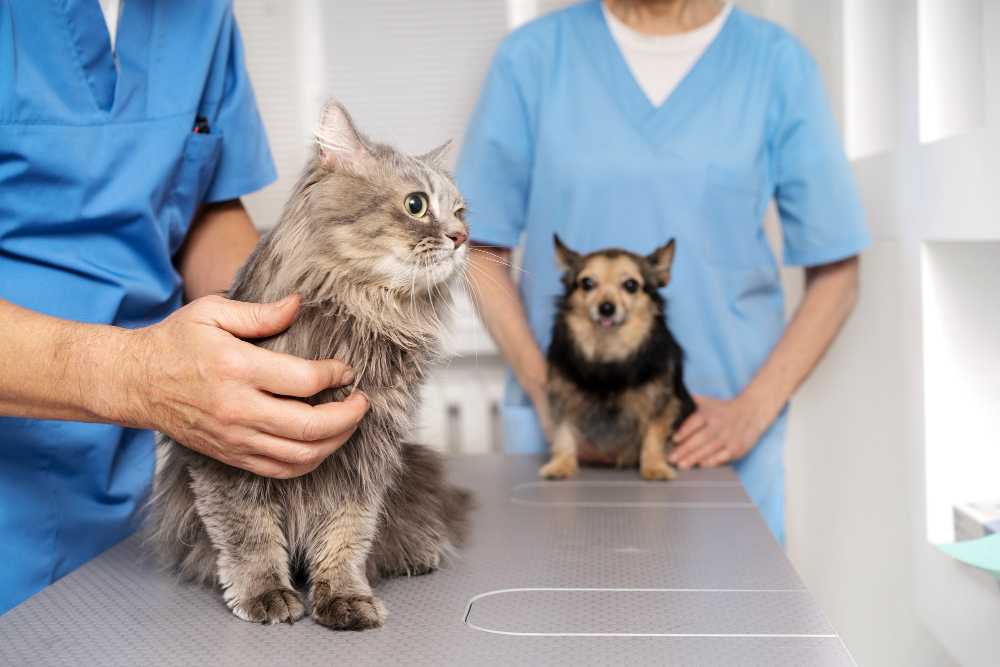Chronic kidney disease (CKD) is a prevalent health issue in aging dogs and cats. As advancements in veterinary medicine and animal nutrition extend the lifespan of our pets, we are seeing an increase in age-related comorbidities, including CKD. However, with early diagnosis and appropriate preventive measures, we can mitigate the disease’s adverse effects, prolonging our pets’ lives and enhancing their quality of life.
Chronic Kidney Disease: An Overview
CKD is a degenerative disease that primarily affects dogs and cats in their senior years, although it can occur at any age. It is characterized by a gradual loss of nephrons, the functional units of the kidneys responsible for urine formation, leading to a deficiency in kidney structure and functionality.
The disease progresses silently, often going unnoticed until it reaches an advanced stage with significant kidney function loss. CKD is categorized into four stages, with the initial three stages typically showing no obvious clinical signs to pet owners:
- Stage I: No evident clinical signs, but urine dilution may be noticeable. Protein levels in the urine and blood tests may show changes.
- Stage II: Urine dilution and hypertension become apparent, with changes in protein, urea, and creatinine levels in blood, plasma, or urine tests.
- Stage III: More noticeable clinical signs emerge as the kidneys stop filtering (uremia), with increased changes in test results.
- Stage IV: Severe clinical signs such as excessive water intake, increased urination, nausea, vomiting, weakness, apathy, and significant changes in clinical examinations.
The Genesis of Chronic Kidney Disease
While the exact causes of CKD remain unknown, studies suggest it may have a genetic or congenital origin, or it could be acquired during the pet’s lifetime. Certain dog breeds, including Lhasa Apso, Shi Tzu, Sharpei, Doberman, Samoyed, Cocker Spaniel, and Beagle, show a higher predisposition to CKD. Among cats, Persian, Abyssinian, Siamese, Ragdoll, Burmese, Maine Coon, and Russian Blue breeds are more prone to the disease.
Kidney Disease in Cats: A Closer Look
Kidney disease is a common issue among cats, regardless of breed. Cats in the wild derive most of their water intake from their prey, leading to a common misconception that domestic cats do not require much water. Recognizing the early signs of kidney disease in cats is crucial for effective treatment and improved quality of life. These signs, which usually appear between the 2nd and 3rd stages of the disease, include:
- Selective appetite
- Increased water intake
- Increased urinary volume
- Lighter-than-normal urine
As the disease progresses and the kidneys’ functional units become increasingly compromised, more severe symptoms become evident:
- Anorexia
- Anemia
- Hypertension
- Dehydration
- Progressive weight loss
- Gastrointestinal disorders (vomiting and diarrhea)
- Loss of acid-base control in the body
The symptoms of kidney disease in dogs closely mirror those in cats, so pet owners should be vigilant for any of the above signs.
Treating Chronic Kidney Disease
Treatment for CKD is tailored to each patient, considering the disease stage and the pet’s biochemical and hematological parameters. Regular veterinary consultations are essential, with stage IV patients often requiring hospitalization and hemodialysis.
Dietary changes, alongside medication and veterinary monitoring, play a crucial role in mitigating the disease’s harmful effects, especially in the early stages. If your pet is diagnosed with CKD, consult an animal nutritionist for dietary advice.
The primary goals of therapeutic and nutritional treatment are to reduce renal overload, alleviate clinical symptoms, maintain weight and muscle mass, slow disease progression, and enhance the pet’s quality of life.
It’s important to note that CKD is incurable and progresses rapidly and silently. Therefore, annual veterinary check-ups are essential for early diagnosis and effective treatment, leading to a better quality of life for your pet.
Preventing Kidney Disease in Pets
Given the unclear origins of CKD, the best preventive measure is to encourage water intake. Cats, who naturally derive water from their food, can be encouraged to drink more water by providing clean, fresh water sources. Dogs, who typically drink from water bowls, can also benefit from increased hydration, which can be encouraged through wet snacks and frozen fruits. For more information on fruit snacks for pets, refer to this comprehensive guide on healthy fruit snacks for dogs and cats.
Physical activity aids kidney function and water intake, promoting overall well-being and quality of life. Regular veterinary visits and annual preventive exams are crucial for early disease detection, enabling treatments that slow disease progression and increase the pet’s lifespan.
Conclusion: Prioritizing Pet Health
Chronic kidney disease is a common and serious health issue in our aging pets. As pet owners, it’s our responsibility to understand the nature of this disease, its symptoms, and the importance of early detection. Regular veterinary check-ups, a balanced diet, and an active lifestyle are key to managing and potentially slowing the progression of this disease.
While CKD is incurable, with the right preventive measures and treatments, we can significantly improve our pets’ quality of life. Encouraging water intake, providing a nutritious diet, and maintaining regular physical activity are all crucial components of a comprehensive care plan.
Remember, our pets depend on us for their health and well-being. By staying vigilant for signs of CKD and taking proactive steps to manage it, we can ensure our furry friends live their lives to the fullest. The journey with CKD may be challenging, but with love, care, and the right approach, we can make this journey as comfortable as possible for our beloved pets.

